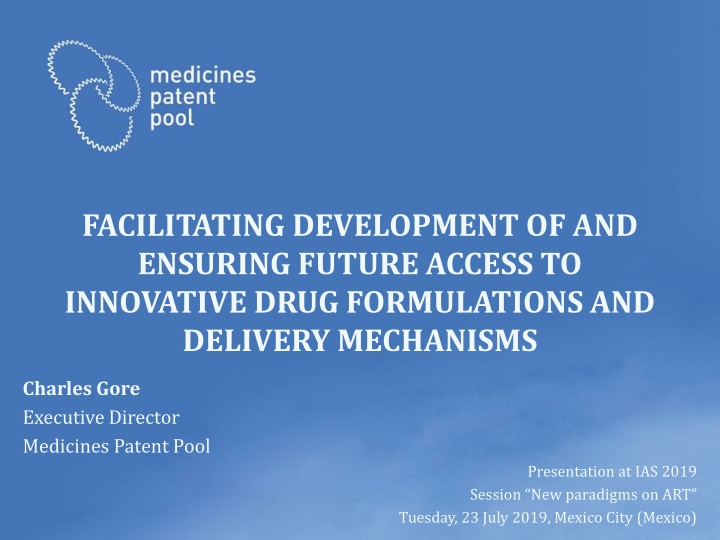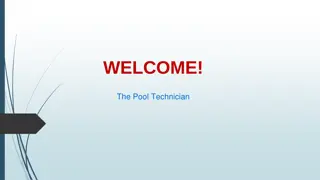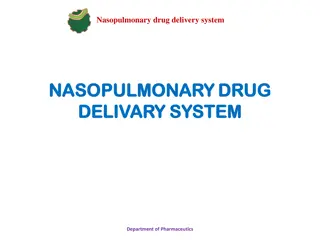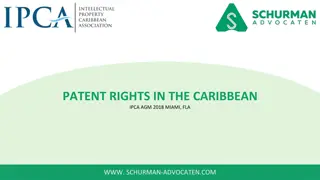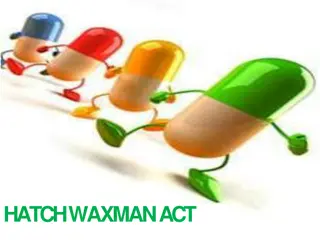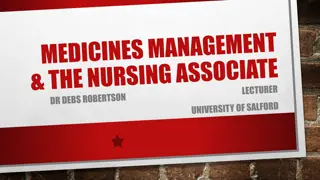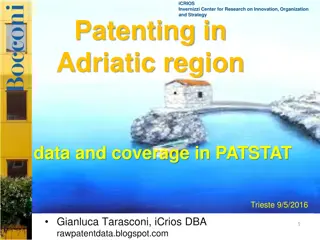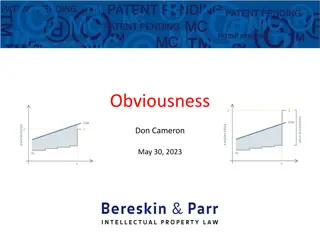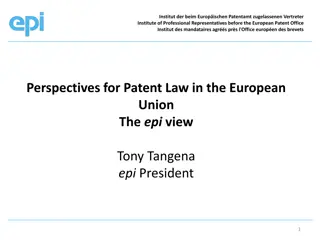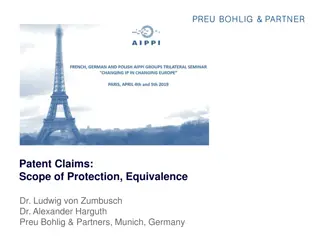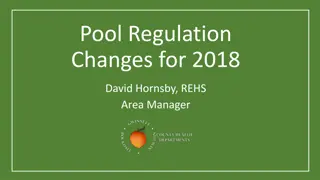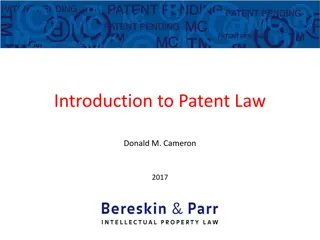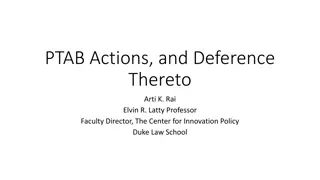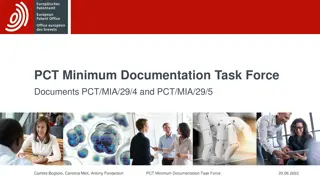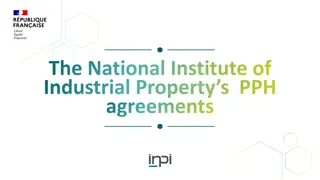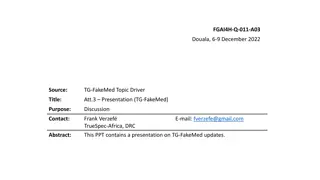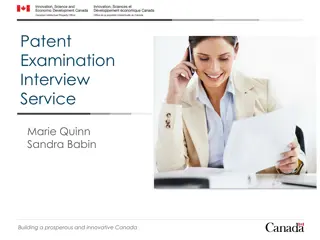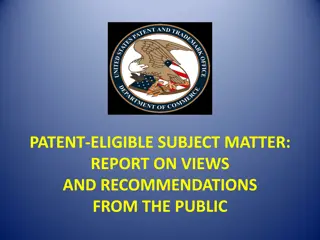Facilitating Development of Innovative Drug Formulations and Delivery Mechanisms: The Role of Medicines Patent Pool
The presentation by Charles Gore, Executive Director of Medicines Patent Pool, at IAS 2019 discussed how the MPP works to ensure future access to innovative drug formulations and delivery mechanisms. The MPP model involves negotiating public health-driven licenses with patent holders, sublicensing to generic manufacturers for affordable versions, and promoting public-health-oriented licenses. Their role in new paradigms on ART includes facilitating development and early access to innovative formulations, such as the successful approval and supply of new drug combinations to millions of people.
Uploaded on Oct 04, 2024 | 2 Views
Download Presentation

Please find below an Image/Link to download the presentation.
The content on the website is provided AS IS for your information and personal use only. It may not be sold, licensed, or shared on other websites without obtaining consent from the author.If you encounter any issues during the download, it is possible that the publisher has removed the file from their server.
You are allowed to download the files provided on this website for personal or commercial use, subject to the condition that they are used lawfully. All files are the property of their respective owners.
The content on the website is provided AS IS for your information and personal use only. It may not be sold, licensed, or shared on other websites without obtaining consent from the author.
E N D
Presentation Transcript
FACILITATING DEVELOPMENT OF AND ENSURING FUTURE ACCESS TO INNOVATIVE DRUG FORMULATIONS AND DELIVERY MECHANISMS Charles Gore Executive Director Medicines Patent Pool Presentation at IAS 2019 Session New paradigms on ART Tuesday, 23 July 2019, Mexico City (Mexico)
DECLARATION OF INTEREST I declare no conflicts of interest. MPP activities in HIV, HCV, TB and the long-acting space are funded by Unitaid. MPP expansion into patented essential medicines is undertaken with financial support from the Swiss Agency for Development and Cooperation and the Wellcome Trust.
THE MPP AS A MECHANISM TO FACILITATE DEVELOPMENT AND ACCESS TO MEDICINES
MPP MODEL: HOW WE WORK ROYALTIES The MPP negotiates public- health driven licences with patent holders. > > > PATENT HOLDERS GENERIC MANUFACTURERS PEOPLE LIVING IN LOW- AND MIDDLE- INCOME COUNTRIES The MPP sublicenses drugs to generic companies. Licensing terms encourage the sale of affordable generic versions in developing countries.
MPP MODEL: PUBLIC-HEALTH ORIENTED LICENCES Strict quality assurance policies Flexibility to combine different medicines & develop fixed-dose combinations Non-exclusive to encourage competition Wide geographical scope Public disclosure of company patent information Compatibility with other access policies and strategies Transparent: terms of licences published Licence management to monitor compliance and prevent market leakage
ROLE OF THE MPP IN NEW PARADIGMS ON ART: INNOVATIVE DRUG FORMULATIONS
FACILITATING DEVELOPMENT AND EARLY ACCESS TO INNOVATIVE FORMULATIONS Within 5 years of FDA approval of DTG, new combination TLD developed, approved and supplied to 2.7 million people 2013 2014 2016 APRIL MPP signs licence for DTG with ViiV Healthcare AUGUST US FDA approval DTG as HIV treatment JUNE WHO recommends DTG as part of first- line HIV treatment 2017 2018 AUGUST US FDA approves TLD from first MPP licensee JUNE Six generics ready to supply TLD TLD already approved in 22 countries Filed in further 21 countries Supplied in 37 countries DECEMBER TLD supplied in 26 countries, serving 2.7 million PLHIV SEPTEMBER CHAI et al price of TLD approx. 75 USD/person/year Latest TLD (300/300/50 mg) data from March 2019
FACILITATING DEVELOPMENT AND EARLY ACCESS TO INNOVATIVE FORMULATIONS TAF/FTC/DTG New combination identified as potential future first- line treatment by the WHO Conference on Antiretroviral Drug Optimization (CADO 3) Flexibility to combine different medicines to develop FDCs Combines molecules from two different patent holders into single fixed dose combination Developed in record time. USFDA approval from one manufacturer, filed by one other and under development by several other MPP licensees So far, has been filed in8 countries for regulatory approval, approved in 4 countries and many more planned in the coming months Latest TAF/FTC/DTG (25/200/50 mg) data from March 2019
ROLE OF THE MPP IN NEW PARADIGMS ON ART: INNOVATIVE DELIVERY MECHANISMS Long-acting technology space
LONG ACTING TECHNOLOGIES: INTELLECTUAL PROPERTY LANDSCAPE Long-acting technologies MPP/Unitaid report on the patent landscape for long- acting technologies with potential impact for preventing or treating major diseases in low- and middle-income countries Available at https://bit.ly/2xOrGiK
LONG ACTING TECHNOLOGIES: FINDINGS FROM IP LANDSCAPE ANALYSIS LA technologies often have multi-layered protections on the molecule, the formulation, the delivery device, and the process of manufacturing, potentially providing additional years of exclusivity for the LA product. Patented platform technologies can be applied to multiple products. Frequently a licence is granted to a specific product using such technology, rather than to the entire platform. Geographical coverage of patent filings often varies by product/technology. Smaller corporations and academic institutions tend to file in less LMICs compared with major pharmaceutical companies. Key manufacturing countries (e.g., India and China) are often covered.
LONG ACTING TECHNOLOGIES: LONG-ACTING TECHNOLOGY ACCESS HUB The MPP is entering an exploratory phase to determine whether, and how, the MPP model can be applied to facilitate the development of long-acting formulations of public health importance in LMICs The MPP is proposing to establish a Long-acting Technology Access Hub Seeking commitments for collaboration /licensing on development of priority products and technologies Expanding access to drug/device/delivery platform combinations of emerging long-acting products Facilitating information sharing to maximize potential of long- acting pipeline for LMICs Working closely with existing initiatives that are active in the long acting space This exploratory phase is supported by Unitaid
LONG ACTING TECHNOLOGIES: EXAMPLES OF PATENT POOLING Supporting development of and access to the most optimal medicine/platform pair (ILLUSTRATIVE ONLY) GLE/PIB (G/P) TAF, FTC, DTG, BIC CAB, EfDA, GS-CA2, LA injectables HCV Malaria HIV TB AMR For for one-shot cure For prophylaxis For PrEP or treatment For DR-TB and LTBI treatment or preventing transmission One-shot new antibiotics for good stewardship BDQ, DLM, others Atovaquone, Ivermectin Medicines Removable depots Platforms(Licences would likely be product-specific) HIV HBV For PrEP or treatment maintenance Current treatments and future functional cures For vector control LA injectables Product development by partners Malaria Depots biodegradable Depots non-biodegradable LA orals Malaria HIV For vector control For PrEP LA orals Microneedle patches (MAPs) Microneedle patches (MAPs) HIV Treatment or PrEP. For neonatal prophylaxis + other disease areas that could benefit from LA/ER + Other patents that could hinder freedom to operate
TAKE-HOME MESSAGES: NEW PARADIGMS ON ACCESS-ORIENTED LICENSING Access-oriented licensing can support new ART approaches, including new paradigms: Facilitating the development and access to new triple-therapy combinations (e.g. TLD, TAF/FTC/DTG) Facilitating access to new dual therapies (e.g., DTG/3TC) Facilitating development of and access to long-acting formulations (medicines and delivery mechanisms) The MPP looks forward to working with all stakeholders in the emerging long-acting space. To avoid the pitfalls the past, when new medicines were introduced first in high-income countries and only much later in LMICs, we need to be thinking ahead of the curve to prepare for a healthy market and prompt access to these game-changing long- acting tools Lelio Marmora Executive Director, Unitaid Source: MPP 2018 Annual Report: Expanding Access to Public Health
THANK YOU! WWW.MEDICINESPATENTPOOL.ORG WWW.MEDSPAL.ORG @MEDSPATENTPOOL Contact details Charles Gore Sandra Nobre Esteban Burrone S bastien Morin Executive Director Business Development Director Head of Policy Policy and Advocacy Manager cgore@medicinespatentpool.org snobre@medicinespatentpool.org eburrone@medicinespatentpool.org smorin@medicinespatentpool.org
